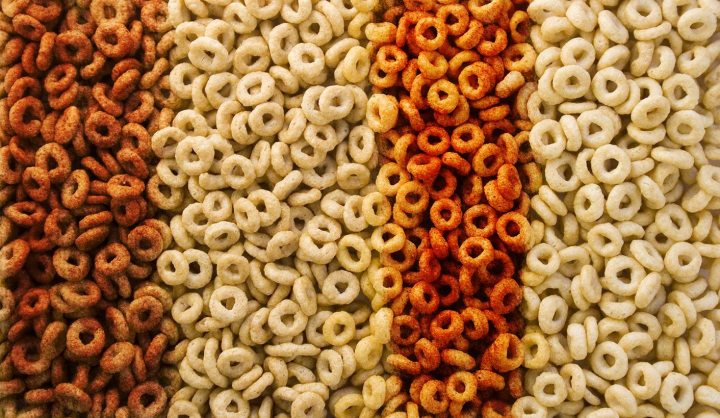World
Cheerios fever, or, Guess Who’s Coming for Breakfast?

In late May, a seemingly benign television commercial over breakfast cereal, in this case the ubiquitous Cheerios, has generated something of a media tornado in America. No, it’s not about General Mills’ use of GM grains to make its products, or the addition of so much sugar in so many versions of the product that Michael Bloomberg is about to declare war on Cheerios. Rather, the uproar is over the composition of the impossibly warm and cuddly family that is portrayed in the newest commercial for this General Mills breakfast cereal. By J BROOKS SPECTOR.
As this ad begins, a beaming, dewy-eyed child asks her mother who is eating her breakfast at their kitchen table if Cheerios are good for the heart. Mom says yes; the girl takes a box of the cereal out of the kitchen; and then, in the next moment, we see a pile of Cheerios in the crook of dad’s left arm, covering where his heart is, all while he is taking a nap on the TV room couch. As he awakens, the commercial ends with the word “Love” on screen. So what’s wrong with that? Well, in this idyllic suburban home, mom’s white, dad’s black and the daughter is a beautiful olive skin-toned, wavy-haired cherub. That’s what all the fuss is about. Hmm… is it Spike Lee’s Jungle Fever at the breakfast table?
Originally called CheeriOats, General Mills first introduced this breakfast staple in 1941. It changed the name to Cheerios four years later as a result of a trade dispute with the maker of Quaker Oats. Fortuitously and fortunately for General Mills, the new name it selected was a perfect, eponymous fit with the shape of those little crunchy oaten circles. As a result, this product is now the largest selling individual cereal brand in America, moving over 2.2 billion boxes in 2012. So, the stakes are really big here.
The commercial was first broadcast on Monday, 27 May and it then appeared on YouTube two days later. Within in a few days, the YouTube spot had been viewed by well over a million people. Despite the ongoing furore, General Mills insists it stands by its commercial, made by advertising agency Saachi and Saachi. Meredith Tutterow, associate marketing director for Cheerios and Multigrain Cheerios at General Mills, said on Friday, “absolutely not,” it would not withdraw the ad. Tutterow added, “There are many kinds of families, and Cheerios just wants to celebrate them all.” And Lynne Collins, Saachi and Saachi’s spokeswoman said, “It is important for us to make sure the work reflects the people we’re trying to sell products to.”
Well, du-uh. No point in just marketing Cheerios to the owners of luxurious yachts, docked at Cannes or Antibes. That should be arguing for recognition by General Mills that there are now millions of interracial family members who eat breakfast just like everyone else – and it should be marketing to these people.
Nevertheless, in a matter of days, people posted thousands of vituperative comments on YouTube about the commercial, and a fair number of them were so overtly racist that General Mills felt it had little choice but to disable the comment function and then have all comments on the commercial scrubbed from the site. However, it didn’t disable the thumbs-up/thumbs-down button – and, there, overall, positives were running nearly 10 times those of the thumbs-down variety. Those numbers, as well as the things being said in other online forums about the commercial, provoked a “We’re really gratified” from Tutterow.
Nevertheless, those widely reported negative remarks – studded with obvious racist language – have, not surprisingly, drawn lots of attention. The AdFreak blog part of Adweek.com ran its post on the ad with the title “It’s 2013, and People are Still Getting Worked Up About Interracial Couples in Ads.” Tutterow says about the controversy, “We’re a bit surprised it’s turned into a story.”
While this commercial is Cheerios’ first interracial “family” on television, it is certainly not the first time a major consumer brand has been touted using an interracial family. However, the media storm may well be because Cheerios is just so darn familiar across the nation – it sells around nine boxes a year for every man, woman and child in the country. Being the front-page story on social news site Reddit probably hasn’t kept attention tamped down either. News reports, feeding off of the online comments, noted, for example, statements like, “These videos encourage people to seek partners outside their racial group. It already happens too much… for comfort. I shall eat Toasted Oats instead.” Still, when one ranter posted, “Why are we celebrating race traitors and ugly monkey children?” another retorted, “Should be for multi-grain cheerios” and yet others posted, “Cute. Causing a stir where? 1956?” – and words along the lines of – I’m going right out to buy more Cheerios!
Now, using race and racially defined characters to make a point – some kind of point – in favour of a product is certainly not new. There was that especially tasteless use by Nivea to push a men’s beauty product and media critics have pointed to Burger King’s commercial featuring hip hop musician Mary J Blige who sings about the company’s crispy chicken wrap – getting Burger King slated for falling back on the old racial stereotype of black people’s supposed insatiable love for fried chicken. And veteran Asia travellers may remember a brand of toothpaste, called – and we swear we are not making this up – “Darkie”, where the box for the tube inside featured an over-the-top caricature of a black minstrel singer featuring very large, very gleaming white teeth and white-gloved hands, thereby portrayed in a riotously prejudicial way, as if to say to buyers, “only our toothpaste can give you incisors like that!”
But the thing is, this new Cheerios commercial seems to have done just about everything right. There seem to be no negatives on screen. There is that heart meltingly adorable little girl, mom, dad, a squeaky-clean home, Cheerios, and love. The only thing missing is apple pie and the flag. Cheerios’ spin-doctor, Camille Gibson, issued a statement that was equally upbeat, when she said, “At Cheerios, we know there are many kinds of families and we celebrate them all.” Glad to hear it – all of us, black and white, male and female, gay and straight, young and old, liberal and conservative, can now feel entitled and emboldened to buy as many Cheerios as our hearts desire.
And still, with this Cheerios ad, there has been an ugly, public blowback. In an era where everyone can be an instant critic via social media, “Someone is always going to get their nose bent out of shape. You have to be careful of not offending people who have money in their pocket to spend,” says Michael Burgi, features editor at AdWeek. Nevertheless, the sales figures must be telling the marketers something about purchasers and their aspirations for themselves as they buy products. Burgi points out that great ad campaigns that feature minorities and interracial couples — almost exactly like this Cheerios commercial — are obviously moving products off the shelves for companies. Otherwise they wouldn’t be making and using them.
Moreover, in fashion and issue advertising categories, the advertising is even more likely to push that bubble. Consider for example, that Coca-Cola has done this in its multicultural, multiracial advertising for years. It has been decades since Coke started telling people – using great crowds of multi-hued people – that it “would like to teach the world to sing in perfect harmony” in its advertising campaigns around the world. Curiously, by contrast, McDonald’s has been particularly careful in mixing of marketing and race. Burgi notes, for example, Mickey D has been particularly careful with its marketing to potential Latino buyers, rarely overlapping race in the way this Cheerios commercial does.
And as Burt Helm in Bloomberg BusinessWeek wrote a few years ago, “Many McDonald’s ads now feature only African-Americans. Of the 10 most-aired TV ads from the past 12 months, compiled by ad tracker Nielsen IAG, five had all-black casts. While the ads usually push specific products or deals, many use situations aimed directly at ethnic consumers.”
Given all these examples, perhaps the real trigger, perversely, has been the presumed intimacy of the situation as portrayed in the Cheerios ad – that warm, loving family with a child – that has been the fertile soil for racial invective on the part of some. For example, the marketing of Viagra, a product whose only use is obviously connected to personal intimacy, goes to great lengths to feature only same-race couples, per David Morse’s comment in Ad Age, rather than the warm little family scene in the intimate drama of this Cheerios ad.
Still, given the continuing growth of the American demographic under the interracial rubric (see: “As inter-racial marriages climb to an all time high, the end of America’s final frontier is in sight” by the author in Daily Maverick), it might be strange that more advertisement agencies, and the companies that hire them, have not been catering, increasingly, to that very demographic – especially since it is one usually upscale economically and educationally. The 2010 US Census showed interracial or inter-ethnic opposite-sex married couple households grew by 28% over the decade, from 7 % in 2000 to 10 % in 2010. Of course personal feelings don’t always follow the law or the reality of the lives people now live. When a no-longer-enforced state law on inter-racial marriage was placed on the ballot for a popular referendum in South Carolina in 1998, 30 % still favoured the ban.
Given that, are marketers somehow fearful of offending a relatively small group of Americans who may feel so strongly about “race-mixing” that they will boycott products because of such feelings? Even if such fears would seem, on the face of it, to be unrealistic, the very fact of a fracas over that 30 seconds’ worth of Cheerios familial love may give some marketing executives pause as they try to maximise their products’ market share. Even arrant racists eat breakfast too, after all.
But Washington Post columnist Mary Curtis alludes to yet another possible issue buried in all of this. As she writes, “Here we go again, with more proof, if anyone needed it, that the post-racial American society some hoped the election of an African American president signified is far from here. Who would have thought that breakfast cereal would trigger the latest racial battle line?… The parents of Barack Obama married in one of the states where it was legal – that’s Hawaii, not Kenya – and his extended family portrait reflects the world. In making this ad, Cheerios is just reflecting the new reality, and might be gaining themselves many more customers than those inclined to punish them – if those folks even ate the cereal to begin with. Just as young people today think living in an America with a black first family in the White House is simply the way it is, children who see a family like their own on TV will hardly give the ad a second glance.”
One thing seems certain, however. Manufacturers, marketers, social scientists, politicians – all of us, really – are going to be very, very curious about the numbers when General Mills releases Cheerios sales figures covering the mid-2013 period, and where, geographically, they have risen and where they have fallen off, for what this may tell us about America’s racial psyche now. DM
Read more:
- Watch the ad here
- Breakfast Food Statistics at StatisticsBrain.com
- If This Cute Cheerios Ad Causes Drama, What Won’t? at National Public Radio
- Cheerios Ad Brings Out the Racists at Slate
- Vitriol Online for Cheerios Ad With Interracial Family at the New York Times
- Backlash greets Cheerios ad with interracial family at the Washington Post
- Cheerios ad featuring interracial family sparks backlash at CTVNews
- Cheerios ad featuring interracial couple sparks racist backlash at the New York Daily News
- Racial diversity advocates cheer on Cheerios for controversial ad (video) at Al.com (the Alabama group of newspapers)
- Cheerios commercial draws racist comments online at the Star Tribune
- Nivea apologizes for ‘inappropriate and offensive’ ad that sparked racial outrage at the New York Daily News (profiles the quick demise of a Nivea commercial featuring a black actor throwing a Rasta hairstyled head like a shot-put three years ago)



















 Become an Insider
Become an Insider